Comparing Snapdragon 810 v2 and v2.1: More Memory Bandwidth, Higher Clocks
by Joshua Ho on June 18, 2015 9:00 AM EST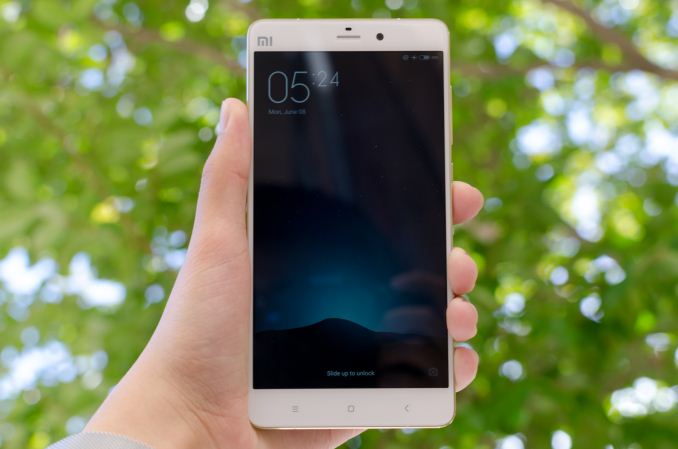
Around a few weeks before the launch of the Xiaomi Mi Note Pro, I was digging through kernel source to understand Snapdragon 810 and some other Qualcomm SoCs. We had kept track of MSM8994v1 and MSM8994v2, which were relatively well understood in terms of what they represented. V1 was an engineering sample variant, which was discussed as early as September in 2014. This variant set both the A57 and A53 clusters to a ~1 GHz maximum. V2 was the first mass production revision, which was present in both the LG G Flex 2, and HTC One M9. However, shortly before the launch of the Mi Note Pro, we noted references to v2.1 in various kernel source trees.
Immediately diving into the issue, what I found was that there wasn’t much of note about v2.1 other than a change to the chip ID and other identifying information, so any formal information on the changes between these revisions is scarce. Meanwhile phones that definitely didn’t have this variant of the SoC still had references to it in kernel source, which only made it all the harder to even identify v2.1 devices in the first place. Ultimately the only way to truly verify whether a device has a certain revision of an SoC is to either see whether the file is included in the compilation process or to verify the revision by checking the device itself.
Our big break came with the release of the Xiaomi Mi Note Pro, which was among the first (if not the first) devices to incorporate a v2.1 SoC. After getting our hands on a sample of the Mi Note Pro, we were finally able to start piecing together everything in order to really understand what was going on with this new variant.
The first and most obvious change in v2.1 is a mild increase in GPU clocks from 600 to 630 MHz. This represents around a 5% increase in performance, which helps to close the gap with the 772-700 MHz Mali T760MP8 graphics processor used in the Exynos 7420 of the Samsung Galaxy S6. This is fairly obvious to anyone that runs a graphics benchmark on this new variant, although this is a best-case improvement as inefficiencies elsewhere can erode the difference.
The other differences are far more subtle. The first is that there’s noticeably less throttling on the A57 cluster compared to Snapdragon 810 v2. However even with that change - and unlike the Snapdragon 808 and competing SoCs - both variants of the Snapdragon 810 still see the unfortunate characteristic of ultimately forcing all threads off of the A57 cluster to stay within TDP limits in high load conditions, such as when running Basemark OS II’s battery test.
The second difference requires testing peak CPU bandwidth and latency between L1, L2, and main memory, which required digging into our in-house benchmark tools. In the interest of seeing 810's maximum memory bandwidth, we put together a memory multithreaded memory benchmark that runs on multiple CPU cores, and combines read and write bandwidth to try and get as close as possible to maximum bandwidth available. The figures that we present here will represent a scenario where two threads, one reading and one writing will load the memory system simultaneously. This is done to try to saturate the main memory controller and to circumvent some of the quirks of ARM's bus architecture, which has dedicated read and write ports, leading to only half the total possible bandwidth in each direction.
We’ve also tested against multiple other applications such as Rahul Garg’s RgBandwidth and RamBench to verify these observations. We also checked with instrumented runs that the CPU, memory controller, and CCI interconnect were all running at appropriate frequencies so these results should be largely unaffected by the governor due to the 100% duty cycle of the load during the test.
The graphs above are interesting, but they don’t really illustrate the relative difference between v2 and v2.1. To better show this, the graphs below represent the percent difference between the HTC One M9 and Xiaomi Mi Note Pro in this test, where positive values are an advantage in favor of Mi Note Pro, while negative values represent an advantage in favor of the One M9.
From the calculations, memory latency improves on an average of 15%, but this is mostly concentrated in the L1/L2 cache portion of the test, while the differences in DRAM are relatively small. If we change the scaling to show less of main memory, we can see that most of the variance is present in that portion of the test. Given that we’re looking at time on the order of nanoseconds, I wouldn’t think too hard about these differences either. The only interesting thing to note in the latency test is that the “memory mountain” model is still valid, where we can expect about an order of magnitude increase in latency for each level of cache that we miss, where L1 appears to take about 5 cycles at 2 GHz, then around 15 cycles for L2, then around 600-700 cycles for main memory. (To put that into comparison for PC CPUs, L3 cache usually hits up to 70 cycles and up to 150 cycles for Intel's CrystalWell eDRAM before the jump out to main memory.)
The memory bandwidth values are really much more interesting though, as there’s a consistent improvement in bandwidth across the board. There is some interesting behavior around L1 cache, but this is likely due to the previously mentioned ramp time for frequency scaling. If we just look beyond L2, into the main memory, the result is that there’s around a 33% increase in bandwidth, and a 38% average increase if we look at the entire sweep through memory.
Overall, for a 0.1 revision, Snapdragon 810 v2.1 is a pretty significant change where memory is concerned. We also see some improvements in terms of thermal management, but we yet have to fully characterize just how much this improvement is and if it's enough to be able to compete with Samsung's 14nm silicon in the Galaxy S6.
Meanwhile there were rumors floating around of a new revision due to show up in the summer, and it appears that this is the rumored revision. This leads me to question whether it made sense to release devices with the v2 revision, especially if future revisions would have resolved some notable issues and dramatically improved SoC performance. I also question whether OEMs would silently introduce these SoCs into later production runs of products that first shipped with v2, which is yet another can of worms.
Putting these questions aside, this new revision brings much-needed improvements to the Snapdragon 810, and should go a long way as a stop-gap until Snapdragon 820 begins shipping. We'll see how the change from v2 to v2.1 affects performance on a higher level in our Xiaomi Mi Note Pro review coming shortly.


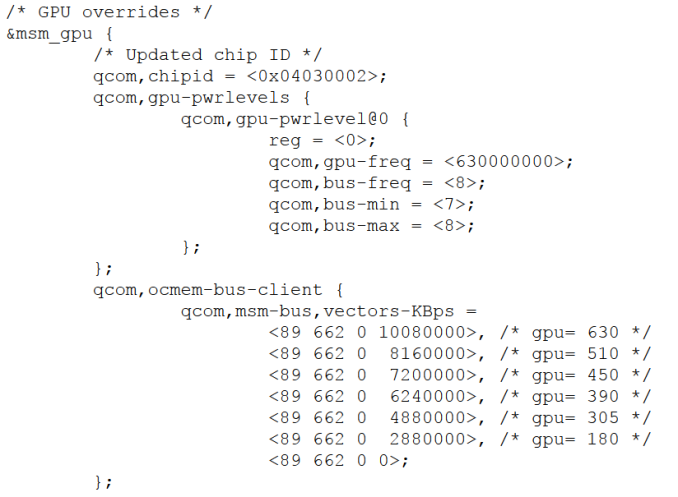
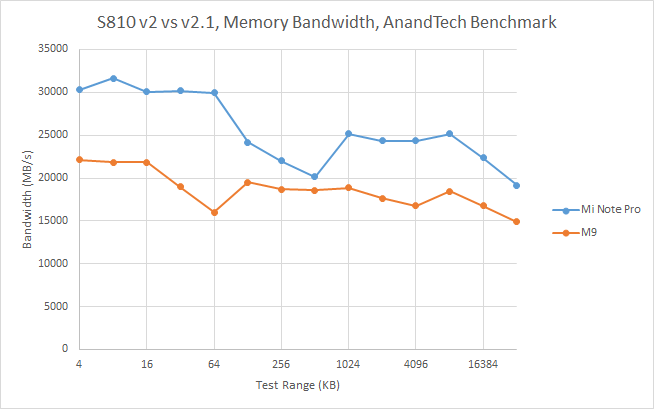
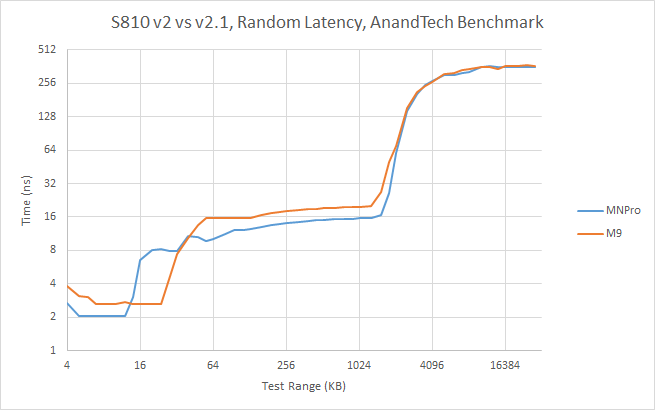
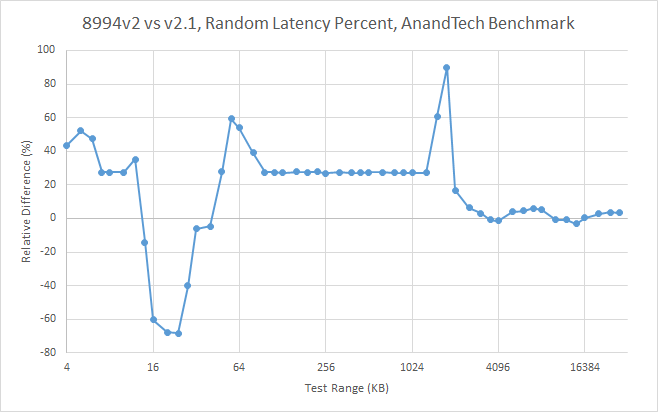
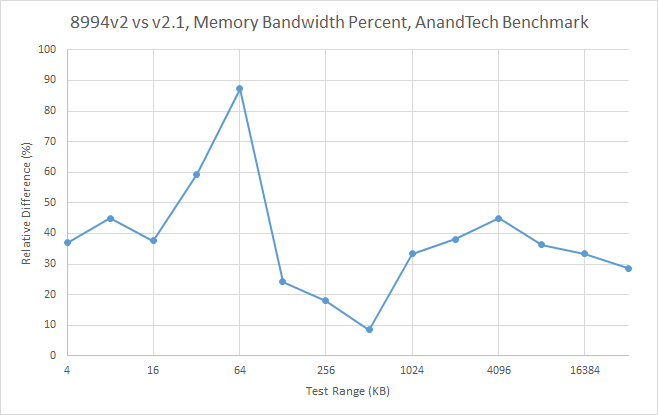








84 Comments
View All Comments
Freaky_Angelus - Friday, June 19, 2015 - link
Yes, also wrote a rather extensive one in my native language.Your point being what?
That benchmarks show it's not the fastest but still a good phone? That despite all the rumors it only went nuts on a single benchmark? That the SD810, ok... not in the Flex2, is working fine? That my M9 runs 3 days on a batterij charge? That people seem to not understand every phone uses throttling?
niva - Friday, June 19, 2015 - link
The point being is that the HTC One M9 was a huge dud and largely because of the SD 810 inside of it. This website here ran a review and compared it to the M8 and in many regards it was a downgrade.http://www.anandtech.com/show/9137/the-htc-one-m9-...
You can just read the last paragraph. I for one take Anandtech reviews much more seriously than some random internet review on a non-English website.
Freaky_Angelus - Friday, June 19, 2015 - link
Sure, bash on a person and without knowledge bash on the T-Mobile site... That's improving your statement, however you've merely referenced a review I used as source for validity in mine. Anandtech is without doubt the most secure and reliable review site and it makes no sense to debate test scores from them. What does make sense is debate the overall conclusions and validity of conclusions.In addition the word used is 'sidegrade' and not downgrade. Not to mention that since that review 2 very important changes have been made, which make the conclusions no longer (completely) valid.
Any review must hold two things in regard, the fixed hardware and the alterable software. I blame any site review to be too obsessed with focusing on temporary results due to the combination. The camera of the M9 has been improved, twice, since then and, given still not perfect or near the i6 or S6 level, very much no longer a dubious element.
The second element is that there has been a significant improvement on battery drain and continued improvements on application behaviour will also increase the life span on a charge.
HTC One M9 has very good hardware but surely has missed the possibilities of good software. The camera is the most clearest result. Not only is the RAW function a blessing, the now twice improved algorithms make the camera even without manual options an acceptable camera. I say acceptable and emphasize manual here, as in manual mode any person that can or simply has experience with DSLR will be able to take rather impressive pictures. The ability to improve the experience proves the M9 camera sensor is fine, no discussion possible. It also proves HTC has made some big mistakes on launching an unfinished or at least rubbish camera app with it.
The M9 has 2 flaws of which 1 can't be solved.
The screen is non-replaceable and the lack of panel refresh and rather below expected standard color quality is a big miss.
The SD810 is a fine SoC however it needs to be handled properly. Lollipop is an horror story when it comes to the HTC version. Bugs, wild apps keeping the phone awake and A57 core accessing by applications like whatsapp prove it's performing far from optimal. That can be optimized and will end (for that matter for all big.LITTLE phones) with a massive increase in battery life span and performance longevity. As in the rather extensive debate here in the comments also posted, the throttling of the A57's to speeds equal to the A53's make no sense to even use the A53's except for architectural benefits, which are minimal. For that matter, the big cores should only be used for tasks that need them, not to mention be far more focused on 'sprint' than 'marathon' usage.
So, I have taken some in-depth time on the matter and do not blindly agree with the 'heat' claims and 'it's all bad' views that have been so easily (re)posted.
Refuge - Thursday, June 18, 2015 - link
No, they weren't rumors, all flagship phones sporting these chips have heat/throttling issues.Have you read any reviews lately? HTC One M9? Galaxy S6? Any of them?
Refuge - Thursday, June 18, 2015 - link
Correction to that, S6 went with the Exyno's this year.But that is also because the overheating issues weren't rumors, they were real.
Freaky_Angelus - Friday, June 19, 2015 - link
S6 also uses throttling... Every SoC uses that, it's because we stopped using <1W SoC's a while ago. Read the link of Martina84a, illustrates the throttling and how agressive it's on the SD810 and therefor performs far less than it could. Aka, why 2.1 is better.testbug00 - Friday, June 19, 2015 - link
Samsung choose to use the 7420, Qualcomm might have a chance to win part of the S6 designs, but, the rumors 100% were pushed by Samsung. S810 overheating exists, but, it is overblown in rumors, which almost certainly started from Samsung, no one else has motive and something to gain.Freaky_Angelus - Friday, June 19, 2015 - link
Every phone uses throttling and stops at skin-temperature of +/- 40Celsiushttp://ic.tweakimg.net/ext/i/imagenormal/200059015...
testbug00 - Friday, June 19, 2015 - link
Nope, I got an S4 phone hitting over 50C on case. Of course, no one complains that said chip overheated...Freaky_Angelus - Friday, June 19, 2015 - link
50C is a nice temperature and you might be right that that is without throttling. I would expect higher though as my M7 (also 2 yrs old) could easily hit 45 degrees and that was with throttling, so I would expect 50 to still be with some (though very minor) throttling.May I at least claim "no current flagship model" then?